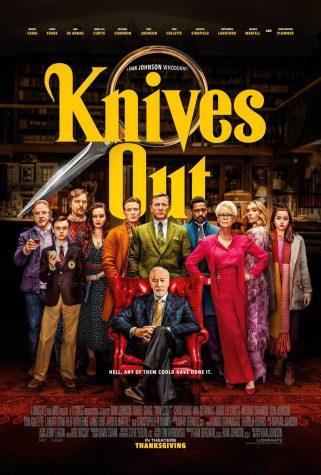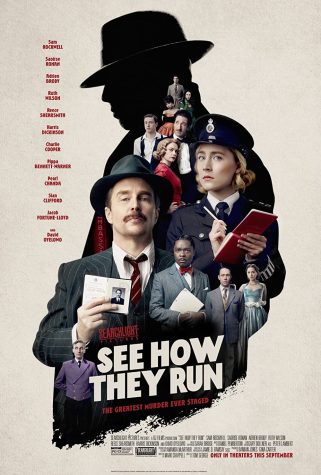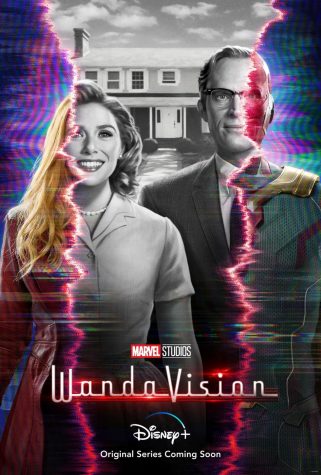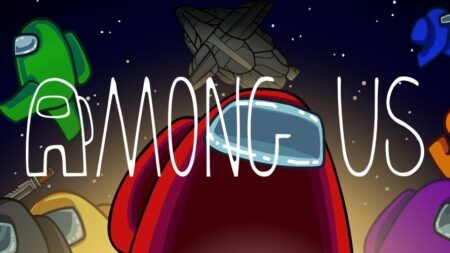Book Recommendations from the Jerds 2017
We’re back with more book recommendations from the 2016-2017 Journalism Staff! Click on the name of the staffer to check out their profile; click on the title of the book for more information about that book. Happy reading!
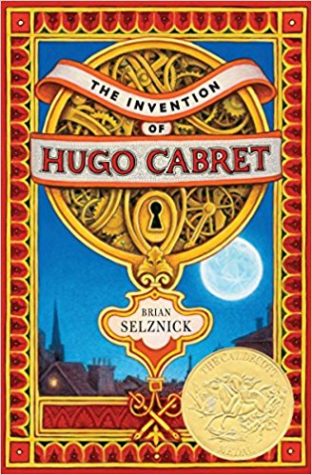 Brigid Ambuul – “The Invention of Hugo Cabret”
Brigid Ambuul – “The Invention of Hugo Cabret”
Few authors have managed to blend art and written word so beautifully as Brian Selznick. His stories seamlessly transition between detailed black-and-white drawings and writing that is just as vivid and beautiful as the pictures he draws. Together these mediums blend to create multi-faceted worlds that intrigue and delight. “The Invention of Hugo Cabret,” the first and most striking of Selznick’s works, weaves the tale of a young boy named Hugo who lives inside the giant clock of Paris train station. As he struggles to survive, alone and hurting after the tragic death of his father, Hugo begins to uncover the secrets contained in a small notebook he left behind. Automatons, mysterious toymakers and even a fantastical Trip to the Moon await the reader in “Hugo Cabret.”
 Mikaila Barker – “Autoportrait”
Mikaila Barker – “Autoportrait”
In his entrancing autobiography, Edouard Levé paints a beautiful picture of his life with short, staccato sentences that detail riveting, or even seemingly mundane experiences. His stories attempt to weave in aspects of humanity that are not normally discussed in day-to-day life, such as the struggle between our emotions and what’s right. Common threads of selflessness, love and humanity are woven throughout, making the book heartbreakingly relatable. If you want to go from laughing to crying in a matter of sentences, then this is the book for you.
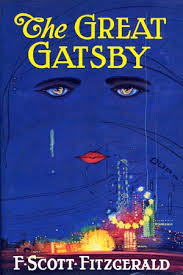 Lauryn Butler – “The Great Gatsby”
Lauryn Butler – “The Great Gatsby”
In F. Scott Fitzgerald’s famously acclaimed novel, “The Great Gatsby,” Nick Carraway finds himself involved in both the luxurious lifestyle and the personal affairs of his wealthy neighbor, Jay Gatsby. Nick watches the extravagant parties Gatsby puts on from the comfort of his own house until, one night, he is invited in and soon engulfed in Gatsby’s private world. Fitzgerald’s control of language and metaphors entices readers and humanizes the enigmatic and idealistic figure that is Jay Gatsby and James Gatz.
All of Fitzgerald’s characters possess life-like flaws and are presented with realistic conflicts p. Not only has Fitzgerald perfectly created a story that makes readers nostalgic for a past age — he also creates characters the reader can relate to.
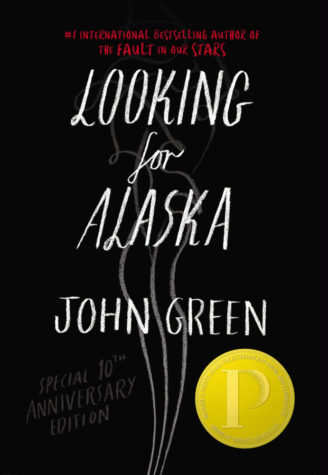 Rebecca Campbell – “Looking for Alaska”
Rebecca Campbell – “Looking for Alaska”
Before even reading the first page, many may assume this book, like John Green’s others, will be full of intrigue, interesting characters, and plot twists … and they would be right. “Looking for Alaska” does not disappoint readers looking for a unique novel with relatable and fascinating characters.
In this story, junior Miles Halter narrates his experience at a new boarding school in Alabama called Culver Creek. Here, Miles collects a crew of amusing and comedic friends, (Colonel and Takumi), who show him the ropes of his hard-to-navigate boarding school and agree that his life is uneventful and needs more adventure.
Then Miles meets Alaska Young, and she is just the enigma he needs to fill his life with more intrigue. He becomes infatuated with her after they first meet. Much like Margo Roth Spiegelman in Paper Towns, Alaska Young is a mystery, too exciting and inexplicable to be compared to anyone or anything else. I loved the dynamic between Alaska and Miles, particularly the way he sees her as captivating and indescribable makes his admiration of her spontaneity fascinating to read.
Looking for Alaska is broken up into two parts: before and after. The event separating the before and after is unpredictable and, like Green’s other literary heartbreaks, it won’t fail to make readers begrudge John Green or even shed a tear. I was caught off guard with this twist, but it definitely follows Green’s trend of leaving me brokenhearted, yet unable to stop reading. I found this story simultaneously relatable, yet elaborate enough to be entertaining.
 Anna Davis – “Our Numbered Days”
Anna Davis – “Our Numbered Days”
The collection of poems in this book will pull at the heartstrings of anyone. After competing in slam poetry contests with his college, author Neil Hilborn began performing with Button Poetry, one of the top poetry publishers, where he became famous for his poem “OCD” (which is included in “Our Numbered Days”). The topics range from love to mental illness to simply living. A common thread of relatability is woven throughout the book, making it an enjoyable — albeit at times dismal — read. This book is a must-read for anyone in the mood to laugh and cry in a matter of a few pages.
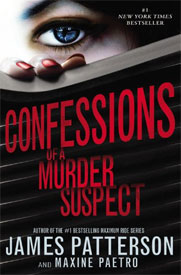 Emily Farren – “Confessions of a Murder Suspect”
Emily Farren – “Confessions of a Murder Suspect”
In this novel, Patterson and Paetro create a wonderful mystery revolving around the murder of Malcolm and Maud Angel. The book is narrated by one of the suspects, Tandoori (Tandy) Angel, who is also one of the couple’s four children. Tandy works to clear her and her younger brothers’ names while her older brother deals with his own problems. Faced with scrutiny from the police and shady characters surrounding her, Tandy has to rely on her own impressive detective skills to try and figure out who killed her parents. While learning more about her parents to try and find more suspects, Tandy also begins to uncover some dark family secrets. With abundant red herrings and sudden discoveries, it’s impossible to tell where the book will take you.
 Rachel Howard – “The Diabolic”
Rachel Howard – “The Diabolic”
For her sophomore series, S. J. Kincaid (the author whose praises I sang last year) delivers another thrilling and twisting sci-fi adventure for fans of intrigue and action alike. Set in a distant, deep space future where learning is spurned and ignorance is worshipped, “The Diabolic” chronicles the adventures of Nemesis, a genetically modified human bred solely to love and protect her master, Sidonia. When the Emperor demands Sidonia’s presence at court as leverage against her father, Nemesis’ role shifts; to protect her master, she must replace her, plunging the Diabolic into a web of byzantine deception, cutthroat politics and emotions she was never programmed to feel. The plot more than twists; it switchbacks, and what the book lacks in the razor wit and rapid pace of Kincaid’s previous series “Insignia,” it makes up for in dynamic storyline and smooth, intense action. Whether you’re looking for romance and self-discovery or murder and betrayal, “The Diabolic” will have you tortuously awaiting every killer plot twist.
 Rylie Pepper – “Nickel and Dimed: On (Not) Getting by in America”
Rylie Pepper – “Nickel and Dimed: On (Not) Getting by in America”
In this book, upper-middle class writer Barbara Ehrenreich takes on the role of an undercover journalist to conduct an investigation revealing the troublesome lives of blue-collar workers. By working various “menial” jobs (Ehrenreich showcases that these jobs require a much higher level of skill than people realize) at about $6-7 per hour, she is awoken to the harsh realities many working Americans have to face — and, unlike many other working class citizens, she doesn’t even have children to support. Exhaustion from working multiple jobs concurrently and oppression from her callous bosses are prevalent occurrences for Ehrenreich, all while she tries to gather enough money together to pay for basic necessities.
Ehrenreich highlights lousy situations with humor and irony by poking fun at herself and others, allowing the reader to view the lives of the poor in a thought-provoking way. Ehrenreich also utilizes metaphors very liberally throughout her book to portray the lives of the working class. She ends the book by addressing her readers and asserting that “the appropriate emotion [we should feel] is shame — shame at our own dependency, in this case, on the underpaid labor of others.” She states that “to be a member of the working poor is to be an anonymous donor, a nameless benefactor, to everyone else,” and she predicts that the working class will become tired “of getting so little in return and [will demand] to be paid what they’re worth.”
This book opened my eyes to the hopelessness that many of the poor face as a result of struggling to survive on low wages; many of the people Ehrenreich worked with decided taking any action to change their conditions was meaningless. Additionally, it gave me a deeper respect for those who withstand the difficulties of undertaking a minimum-wage job. As a high school student who is also a cashier, I view my adult coworkers as the unsung heros of our society, because, unlike myself, many of them have families to support. Ehrenreich delivers a clear and direct recording of her life as a working class woman while showcasing her moral outrage and supplying us with much-needed realizations.
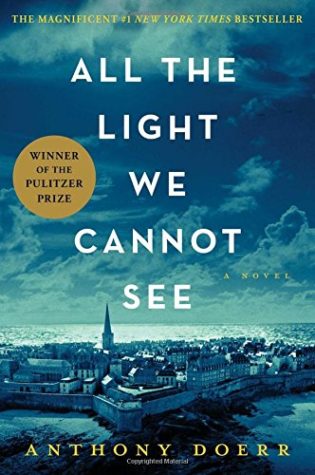 Danielle Pigeon – “All the Light We Cannot See”
Danielle Pigeon – “All the Light We Cannot See”
Imagine a world in which your sight is stolen from you and you are forced to flee for your life from the Nazis. This is reality for Marie-Laure, a curious girl whose father is the keyholder of Paris’s Museum of Natural History. The other protagonist is Werner, an orphan growing up in a rural mining town in Germany. As his mechanical expertise grows, he is recruited for the Hitler Youth. Although these stories seem polar and totally distant from each other, the author (Anthony Doerr) interweaves their stories and creates a beautiful masterpiece of the struggle between past and present identities, loyalty and doing the right thing, and love and war.
 Anastasia Reimann – “Stars, Sea, Storm, and Sun”
Anastasia Reimann – “Stars, Sea, Storm, and Sun”
In his third published work, CAHS senior Matthew Roberts combines poetry and several short stories in an exploration of “the pursuit of Compassion, Truth, Love, and God,” as stated on his website (somekindofauthor.com).
The poetry covers an array of topics: fear, inner turmoil, the loss of loved ones, rejection and more. Each poem’s structure varies slightly, but they all resonate in one way or another, whether by stirring the pangs of loss in readers’ heart, or by sparking hope for a better and brighter tomorrow.
Every short story brings something different to the table. In a style and atmosphere reminiscent of Bram Stoker’s “Dracula,” “The Lighthouse” describes the fateful voyage of Captain Nemo, during which the captain encounters the Keeper, the mysterious caretaker of a lighthouse and the only other person in a place where truth and illusion are combined in perilous ways. “Dandelion Yellow” is the heartwarming tale of Old Man Chester, a man mourning the loss of his wife, who eventually finds an unlikely friend and a pivotal lesson about death in a sweet young girl. Set on the spaceship C.S.S. Compassion, “This Midnight Canvas” finds the captain and her crew struggling with the dilemma of sending aid to suffering survivors of a worldwide plague (and possibly getting infected), or leaving the survivors to die and preserving themselves — thus sparking a debate between crewmembers about the meaning of humanity and compassion.
Though each of the three stories evoke distinct moods and cover different themes, all of them showcase Roberts’ skillful command of language and ability to weave vivid pictures and scenes for his readers. The dialogue is both witty and realistic, and the characters have stuck with me longer than those of any other short stories I’ve read. “Stars, Sea, Storm, and Sun” will both make you smile and make you think, which is exactly why it’s worth the read.
 Elizabeth Reimann – “Fahrenheit 451”
Elizabeth Reimann – “Fahrenheit 451”
“It was a pleasure to burn.” While the opening line in Ray Bradbury’s “Fahrenheit 451” startles one’s conscience, it compels the mind to read on. Like fire, the words in Fahrenheit seemingly leap off each page, consuming the reader and disintegrating their awareness of the world around them. The story’s protagonist, so-called fireman, Guy Montag, is devoted to burning any illegally owned books along with their owners. That is, until he encounters a brave teenage girl who enlightens him about life before books were banned. His worldview is instantly challenged, as are his life decisions.
Although the plot itself is intriguing, it is the characters that give this story its spirit. Bradbury has constructed people who are solely capable of relationships through deep connections, or not at all. In the book’s setting, all books are banned and people are constantly monitored and stimulated by screens and voices. Society has abandoned the notion of developing relationships and is instead absorbed by technology, creating meaningless bonds between people and anger in some. Montag barely knows his wife, let alone himself. Throughout the story, Montag struggles to connect with his mind and reclaim his personal way of thinking and feeling. I loved how all though I could not directly relate to any of the events in “Fahrenheit,” I felt personally connected to each of the characters through their struggles to connect with themselves. I highly recommend this manuscript to anyone strong enough to challenge and transform society’s beliefs, and brilliant enough to fight fire with fire.
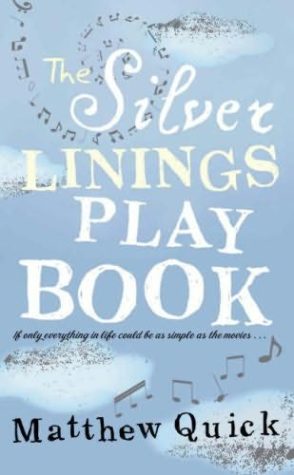 Kaleigh Strong – “The Silver Linings Playbook”
Kaleigh Strong – “The Silver Linings Playbook”
In his 2008 debut novel, “The Silver Linings Playbook,” Matthew Quick explores the life of Pat Peoples, a man diagnosed with bipolar disorder who believes that “there will always be a silver lining that reminds [him] to keep on trying.” Quick effectively draws his readers in by employing a humorous tone to contrast his raw, detailed description of the struggles Pat faces. With the help of family, friends and his shrink, Dr. Patel, Pat gains a new outlook on life and love as he begins to assemble the pieces of his former life.
At the beginning of the novel, Pat is discharged from a Baltimore psychiatric hospital and moves back in with his parents in New Jersey. Pat is determined to reunite with his estranged wife Nikki, and he begins to devote himself to improving himself emotionally and physically for her while becoming acclimated to his new life. Although Pat believes he has only been away for a few months, it is soon revealed that it has been many years since he left, and his parents are hiding the real reason he is not allowed to visit Nikki. Soon after his return to New Jersey, Pat befriends the pragmatic, widowed Tiffany Webster, who is battling her own demons. Tiffany makes Pat an offer he cannot resist: a reconnection with Nikki in exchange for being Tiffany’s partner in a dance competition.
On his website (matthewquickwriter.com) Quick describes the book as “the riotous and poignant story of how one man regains his memory and comes to terms with the magnitude of his wife’s betrayal.” In my eyes, “The Silver Linings Playbook” is a soul-satisfying novel that will pull you into the complex intertwining of Pat’s past and present lives. This book tackles an illness not often talked about in the media — bipolar disorder — and teaches the readers the importance of letting go and being willing to accept all the messy, imperfect pieces of someone’s being. Though the secondary characters are just as exciting and three-dimensional as the main characters, the story hones in on Pat Peoples’ reality and how his actions affect the people around him. This story is for both the dreamers and the realists, as it teaches the importance of balancing both hope and reality.
 Crystal Sung – “Catcher in the Rye”
Crystal Sung – “Catcher in the Rye”
D. Salinger’s “Catcher in the Rye” is one of those famous books everyone either rereads over and over, or doesn’t want to even touch again. While it’s definitely not for everyone and even more definitely not just your typical light read, I found “Catcher” compelling. It follows the young Holden Caulfield as he wanders, disillusioned and depressed, through New York, after getting expelled from a snobbish private school he hates.
Though not all of us take our teenage rebellion to such extreme lengths, I have no trouble empathizing with his angst and emotional turmoil. His reckless, capricious and sometimes sordid acts of rebellion are tempered by moments when the insolent teen I despised a second ago moves me to tears with his displays of heartfelt shame or tender affection.
To some degree, everyone can relate to Holden’s complex and often contradictory tangle of whims and feelings, and Salinger’s portrayal yanks on your heartstrings on an entirely different level. “Catcher” will take you on a roller coaster of intense emotions, if you dare go along for the ride.
Warning: there’s a lot of profanity and some implied sex.
 Skylar Todd – “A Civil Action”
Skylar Todd – “A Civil Action”
“A Civil Action” is a nonfiction narrative that follows the story of a community’s determination to hold two of the biggest corporations in the United States — Beatrice Foods and Grace Chemical — accountable for contaminating the town’s water supply, causing many childhood deaths in Woburn, Massachusetts.
When Anne Anderson’s 3-year-old son becomes ill with leukemia, she begins to explore the possible causes of her son’s sickness. As she continues her investigation, Anderson begins to realize that there has been a dramatic increase of childhood leukemia in the area, and she discovers that the water source in her small town was an important factor in the outbreak. The families of the sick children eventually file a civil suit against Beatrice Foods and Grace Chemical alleging the companies of contaminating two wells with a carcinogen called trichloroethylene. The readers follow the perspective of Jan Schlichtmann, the plaintiff’s attorney, who believed the case had the potential to be a landmark ruling. The novel brings to mind the complexities of the judicial process and the struggle to bring about justice in a corrupt legal system. In addition, this story reveals how a single person can make a difference in the lives of many. “A Civil Action” is a page-turner that will leave readers well-informed and in a state of awe.


